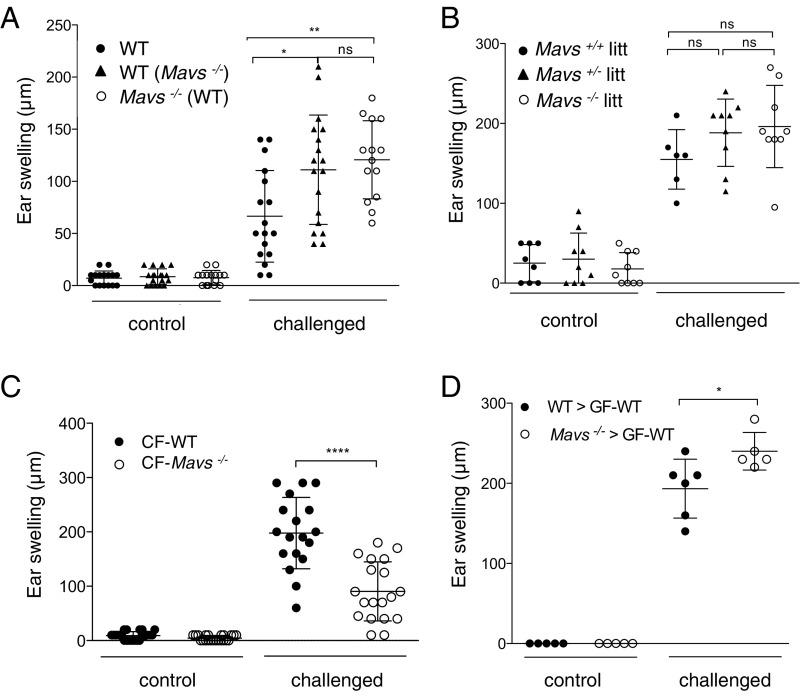Fig. 3.
The increased DTH response in Mavs−/− mice is transmissible by the gut microbiota. (A) DTH experiments were conducted on single-housed WT mice (n = 17) and blindly on cohoused WT (n = 18) with Mavs−/− (n = 14) mice for 4 wk. Ear swelling was measured 24 h postchallenge. Results are mean values ± SDs (pool of two independent experiments). (B) Littermate mice (Mavs+/+ litt, n = 6; Mavs+/− litt, n = 9; Mavs−/− litt, n = 9) were generated from heterozygous crossing and kept in the same cage. DTH experiments were conducted blindly considering mouse genotype at 8 wk of age. Ear swelling was measured 24 h postchallenge. Data are mean values ± SDs of one representative experiment among three. (C) Newborn WT or Mavs−/− mice were cross-fostered with Mavs−/− mothers (CF-WT) or WT mothers (CF-Mavs−/−), respectively, within 24 h of birth. Ear swelling was measured 24 h postchallenge on mice at 6 wk of age. Results are mean values ± SDs of two independent experiments (CF-WT, n = 19; CF-Mavs−/−, n = 19). (D) Four weeks before DTH, GF-WT mice were reconstituted with fresh supernatant of fecal content from WT (WT → GF-WT; n = 6) and Mavs−/− (Mavs−/− → GF-WT; n = 5) mice. Ear swelling was measured at the peak of the response. Data are mean values ± SDs of one experiment. *P < 0.05, **P < 0.01, ****P < 0.0001, ns, not significant as determined by nonparametric ANOVA (Kruskal–Wallis test) followed by the pairwise Dunn’s multiple comparison test (A and B) or Mann–Whitney U test (C and D).

